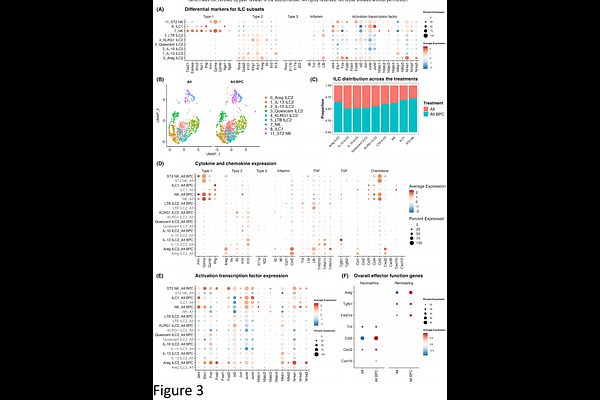PIP-Seq identifies novel heterogeneous lung innate lymphocyte population activation after combustion product exposure

PIP-Seq identifies novel heterogeneous lung innate lymphocyte population activation after combustion product exposure
Huang, Y.-A.; Wang, X.; Kim, J.-C.; Yao, X.; Sethi, A.; Strohm, A.; Doherty, T. A.
AbstractInnate lymphoid cells (ILCs) are a heterogeneous population that play diverse roles in airway inflammation after exposure to allergens and infections. However, how ILCs respond after exposure to environmental toxins is not well understood. Here we show a novel method for studying the heterogeneity of rare lung ILC populations by magnetic enrichment for lung ILCs followed by particle-templated instant partition sequencing (PIP-seq). Using this method, we were able to identify novel group 1 and group 2 ILC subsets that exist after exposure to both fungal allergen and burn pit-related constituents (BPC) that include dioxin, aromatic hydrocarbon, and particulate matter. Toxin exposure in combination with fungal allergen induced activation of specific ILC1/NK and ILC2 populations as well as promoted neutrophilic lung inflammation. Oxidative stress pathways and downregulation of specific ribosomal protein genes (Rpl41 and Rps19) implicated in anti-inflammatory responses were present after BPC exposure. Increased IFNg; expression and other pro-neutrophilic mediator transcripts were increased in BPC-stimulated lung innate lymphoid cells. Further, the addition of BPC induced Hspa8 (encodes HSC70) and aryl hydrocarbon transcription factor activity across multiple lung ILC subsets. Overall, using an airway disease model that develops after occupational and environmental exposures, we demonstrate an effective method to better understand heterogenous ILC subset activation.